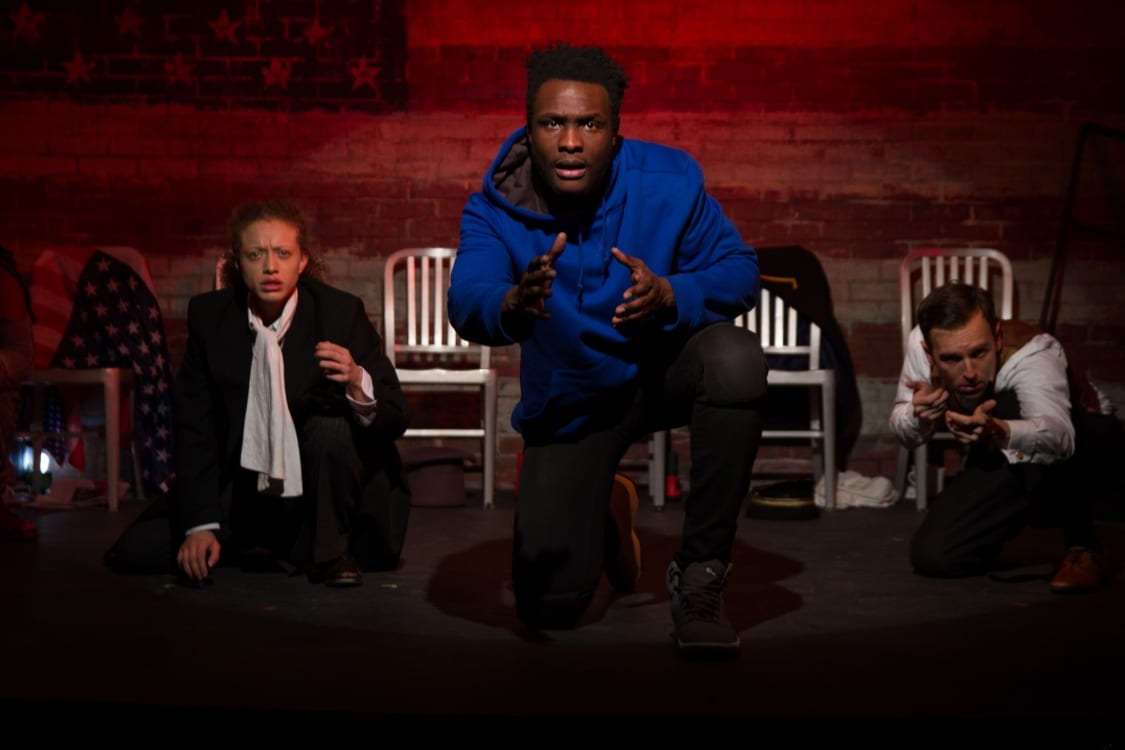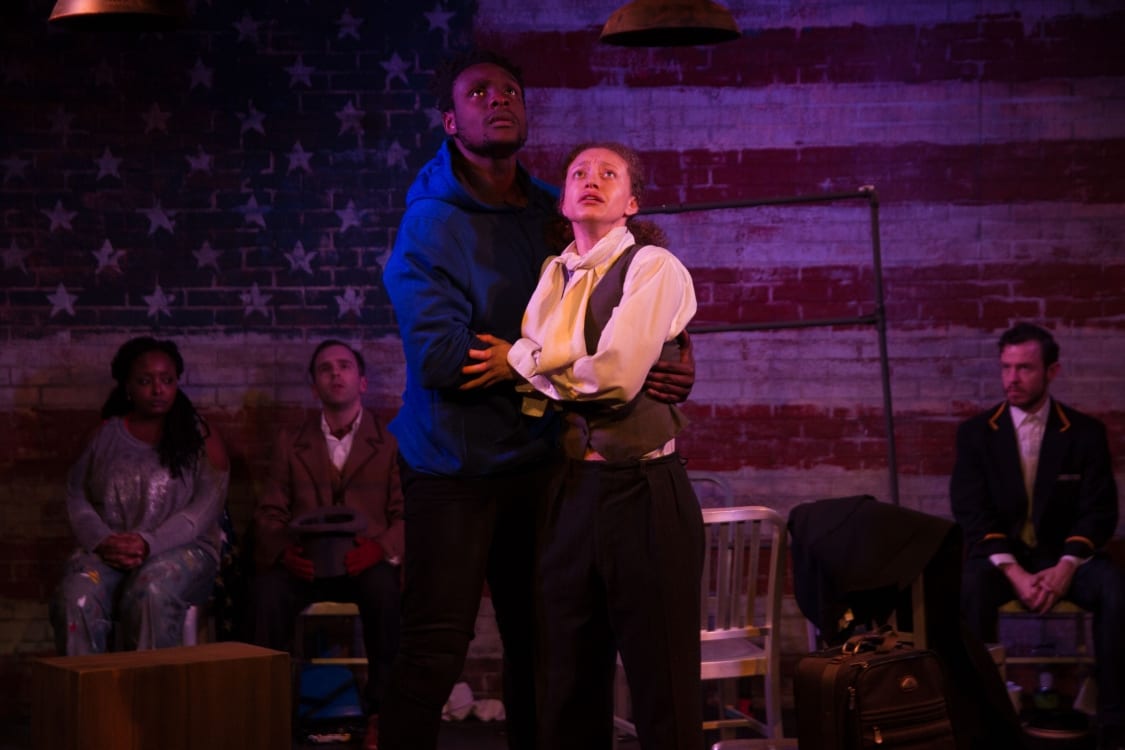There is a poster on the wall in the back of the theater which reads, “1969: The Year of the Black Panther,” in reference to the Black Panther political party of the time. Recently, a different Black Panther – the movie based on Stan Lee’s comics – made history as the first superhero movie to be nominated for the Oscars’ Best Picture. At the advent of Black History Month, it is a positive and powerful parallel to note: fifty years later, in 2019, it is the year of the Black Panther once again.
Elsewhere in the theater, however, less triumphant messages abound. Anti-segregation posters are displayed alongside posters promoting blackface shows and the KKK, and signs bearing modern slogans such as “Black Lives Matter” and “Say Their Names” are peppered in between. Soon the lights go down and the cast appears in contemporary clothing to tell a story set in antebellum America. Before any line is spoken, the sartorial and artistic blending of time periods speaks for itself. The American Tradition appears at first glance to be a vivid glimpse into the past, but it immediately calls into question how much racial injustice really is history.

The play follows two married slaves (Sydney Cole Alexander, Martin K. Lewis) escaping to the North. The fair-skinned Eleanor poses as a white man named Evander, and Bill as her slave, to make the journey. Their plan is thwarted when a sinister plantation owner, Mr. Walsh (Alex Herrald), kidnaps Bill to be sold. With the help of a zealous and self-interested train conductor (Hunter Canning) and a thrice-recaptured slave named Rose (Danie Steel), the pair set out to find their way back to each other, and to freedom.
At its most basic, the story is purely historical. But Ray Yamanouchi smartly writes his 19th-century characters as parallels to 21st-century archetypes. Canning’s conductor, for example, alleviates the seldom-lifted tension as a caricature of a self-proclaimed “woke” person who impedes his cause by trying to speak for groups to which he doesn’t belong; in this case, the slaves. Alexander’s militant Eleanor is reminiscent of a Shakespearean woman (those legendary cross-dressers Portia or Rosalind, perhaps), but one could also imagine her leading a chant at a modern women’s march or telling a catcaller to back off. Above all, Herrald is captivatingly unsettling as Mr. Walsh. The “Not All Slavers” advocate, an obvious critical representation of the modern alt-right, goes from friendly to ferocious in a beat. He renders Eleanor’s character somewhat forgettable; her “tough-girl” persona seen in countless tropes pales (no pun intended) in comparison to the force of Walsh’s unhinged self-righteousness. The exception is the moment in which Eleanor, as Evander, quips, “It’s really tough being a white man,” and casts a dubious look at the audience, summing up the central joke of Walsh’s character and of the play.

The irony of The American Tradition is that the minute we analyze and discuss its intended impact, we disregard its point: no one person can speak for the perspectives of whole communities, theirs or otherwise. But that doesn’t mean it isn’t meant to be contemplated. In Brechtian fashion, it’s less about the audience losing themselves in the characters’ world and more about finding relevance in that world that extends beyond the walls of the theater, beyond antebellum America, and into the modern America that’s evolved from it. Agree with its comparison of eras or not, The American Tradition bears an emotional potency that sticks in the mind regardless.

